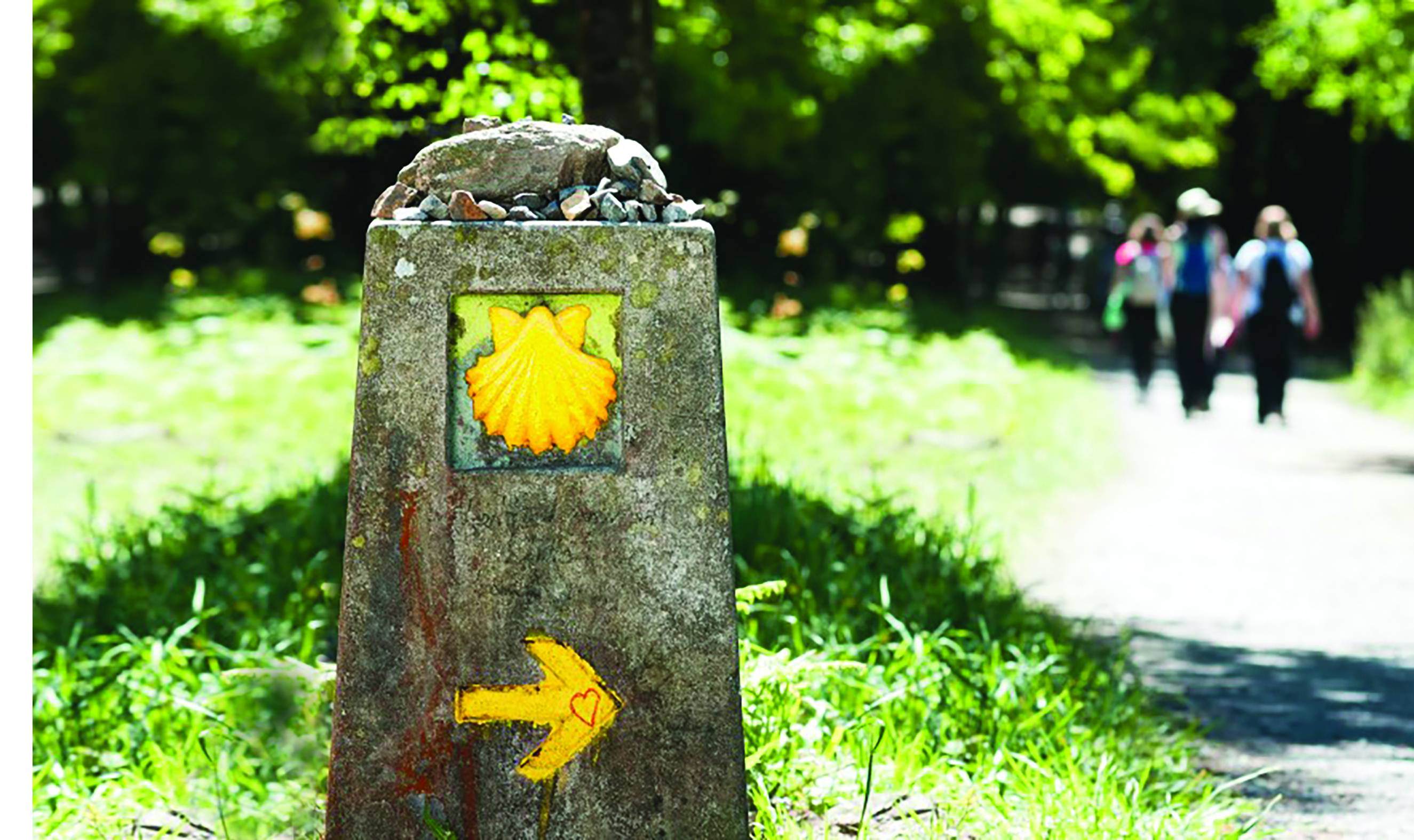Faith in the Unfamiliar
Theology student Madeline Banach journeyed to Spain to walk El Camino de Santiago, a major Christian pilgrimage route of 500 miles.

Posted on November 16, 2018
 Theology student Madeline Banach journeyed to Spain to walk El Camino de Santiago, a major Christian pilgrimage route of 500 miles. Even though her journey was cut short due to an injury, Madeline gained valuable lessons of humility and gratitude. “There occurs a shedding of the old self, which provides space for the new self to emerge and grow. In this vulnerability, one becomes humbled and this, in turn, provides an openness to receiving the gift of grace. I became so very humbled on this journey, and from that daily experience of humility flowed such gratitude for the many blessings of the Spirit,” Madeline shares.
Theology student Madeline Banach journeyed to Spain to walk El Camino de Santiago, a major Christian pilgrimage route of 500 miles. Even though her journey was cut short due to an injury, Madeline gained valuable lessons of humility and gratitude. “There occurs a shedding of the old self, which provides space for the new self to emerge and grow. In this vulnerability, one becomes humbled and this, in turn, provides an openness to receiving the gift of grace. I became so very humbled on this journey, and from that daily experience of humility flowed such gratitude for the many blessings of the Spirit,” Madeline shares.
Below is Madeline’s full reflection on her journey.
A Pilgrimage Story
Most global religions adopt the act of pilgrimage as a form of spiritual practice. The act or process of pilgrimage has been in existence since humankind has had the ability to walk and the desire to venture off to foreign holy places. Making a pilgrimage is not an easy endeavor, and one would never mistake it for a form of vacation.
Within the Christian tradition, there are three major pilgrimage sites: Rome – Jerusalem – Santiago. Having previously traveled to Rome with MMU during the winter break of 2015/16, I found the journey to be a life-changing experience. Prior to that program, however, I had already begun to appreciate the value and character of pilgrimage. In the Search for Meaning course, Dr. Helga Kisler showed us the movie, “The Way” starring Martin Sheen. The film depicted some of the physical and spiritual transformations that could occur over the course of a pilgrimage. It was a moving story, and I became intrigued. Further, I wanted to experience this type of pilgrimage while physically able, so after our finals in May of this year, I elected to go to Spain!
The Camino de Santiago translates into English as “The Way of St. James”. This pilgrimage route leads ultimately to the tomb of St. James, the Apostle of Jesus Christ, and is located in the northwest corner of Spain.
On the “Camino,” I met unique and varied people from all over the world, and essentially talked to anyone who spoke English. In the evening, these pilgrims would gather and share stories of why they walked, or what it was they were searching for. Some were at crossroads in their lives, and needed the time to discern their next steps through prayer and thoughtful meditation. Some people saw the “Camino” as a physical challenge, but their perspectives changed as they journeyed. Among the pilgrims, though, there was no judgment, ever. That is the rule: each pilgrim is participating in his or her own unique spiritual journey, which is to be honored and respected.
My journey had its challenges and celebrations, and miracles occurred when least expected. I did not complete my “Camino” as anticipated because, sadly, I experienced a slight injury, which then curtailed any additional long distance walking. However, after much reflection from my “Camino” experience I have taken away two very important lessons, which are humility and gratitude. When setting out on pilgrimage one separates from everything that is familiar. There occurs a shedding of the old self, which provides space for the new self to emerge and grow. In this vulnerability, one becomes humbled and this, in turn, provides an openness to receiving the gift of grace. I became so very humbled on this journey, and from that daily experience of humility flowed such gratitude for the many blessings of the Spirit.
I became grateful for little, everyday things that one might normally take for granted: for when the rain stopped and I could walk with ease; for when my phone found a signal so that I could reach out to my children; for when a kind and knowing smile transcended the gulf between foreign languages; and for when I could enjoy the most basic of pleasures: a hot meal, a warm bed, a place to rest, and a shower. In other words, I began to see God and the inherent goodness of humankind embedded within the small details of everyday life. There is so much more to our earthly existence, if only we take the time to see things with full acuity. A pilgrimage provides an opportunity for inner personal and spiritual growth, and I continue to hold close these two powerful lessons—of humility and gratitude—within my heart. I may have left the “Camino,” however, the Camino has not left me. These were my “Camino” lessons.



